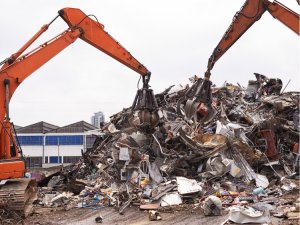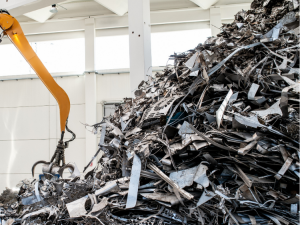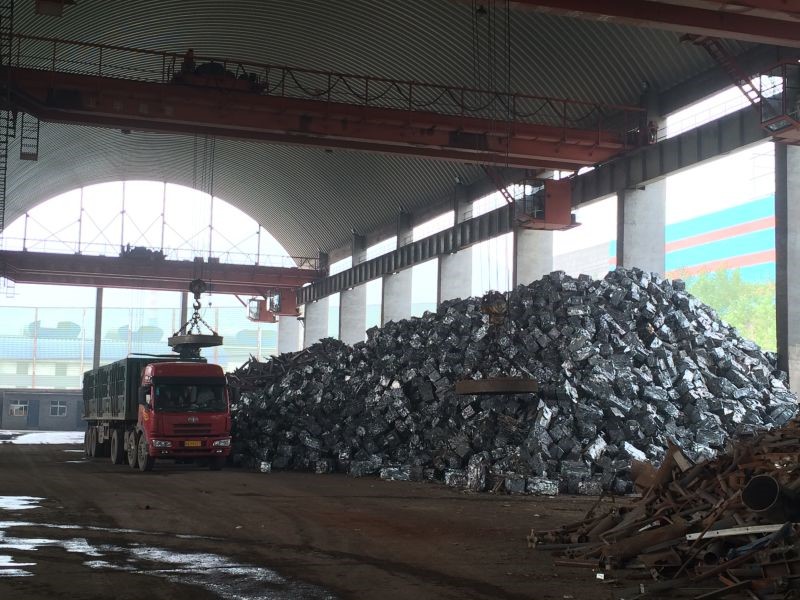
US scrap tags drop in April as tariff fog continues
US scrap prices declined in April for all the grades tracked by SMU amid tariff uncertainty, according to market sources.

US scrap prices declined in April for all the grades tracked by SMU amid tariff uncertainty, according to market sources.

Last week, much attention was focused on President Trump’s “Liberation Day” tariffs and rightly so. They have thrown a big wrench into the market-reading business. Whether you are for them or against them, the potential outcomes are hazy, at best. Maybe we should not forget the basics, tariffs concerns notwithstanding. The basics of this ferrous […]

Prices for five of the seven steelmaking raw materials tracked by SMU increased from February to March, according to our latest analysis.

Ferrous scrap prices rose across the board in March as the market adapted to short supply and the volatile tariff situation, sources told SMU.

Domestic shredded scrap has experienced a renaissance in pricing since January. And that increase had caused traditional exporters to ship their material to domestic users instead of overseas. But with recent changes, this cycle may end with the resurgence of export demand and continued foreign exchange fluctuations.

In the final week of February, SMU polled steel and scrap executives to gather their insights on the current state of the scrap market as well as future projections.

Prices for six of the seven steelmaking raw materials SMU tracks are increased from January to February, according to our latest analysis.

The February scrap market has settled higher on all grades SMU covers.

Prices for the seven steelmaking raw materials SMU tracks moved in differing directions from December to January, according to our latest analysis.
US scrap tags rose for all the grades tracked by SMU in January in what was deemed a "restocking rally," sources said. The January market was up ~$20 per gross ton (gt) across the board. This did not include turnings, which were up $30/gt.

The US domestic ferrous scrap market had a rough 2024, despite optimism as the year started.

Prices were stable to down in November for all seven steelmaking raw materials tracked by SMU, according to our latest analysis.

Ferrous scrap prices were largely rangebound to down at the November settle, market sources told SMU.

Scrap prices ticked up in October outside of Chicago and Detroit, scrap sources told SMU.

September scrap prices came in a soft sideways, with only mild hopes for a higher October, market sources said.

Steelmaking raw material prices have moved in differing directions across August, a change of pace from the declines seen in June and July, according to SMU’s latest analysis.

US scrap prices picked up in August, though near-term demand is expected to remain weak, scrap sources told SMU.

The US ferrous scrap market has essentially traded sideways for August. It may be too early to judge how much traction these prices will have with the trade.

The majority of steelmaking raw material prices declined in June, following the same trend seen in May, according to SMU’s latest analysis.

Scrap prices came in mostly sideways in July, with prime scrap prices edging down while shredded and HMS tags ticked up slightly, scrap sources told SMU. They believe a bottom has been reached in the market.

The ferrous scrap export market on the Atlantic and Gulf Coasts of North America has maintained its pricing for several months despite continuing declines in domestic markets.

After celebrating the July 4th holiday, let’s have a look back at the first half of 2024.

Most longs prices in the US were unchanged this month, except for rebar, which declined by $1.50/cwt ($30/short ton) m/m. While end-use demand is stable, inventories are well-stocked, keeping purchases limited. Domestic availability is sufficient to meet current demand, hindering the appetite for imported material. Meanwhile, prices for scrap remained under pressure in June, with […]

Steelmaking raw material prices have generally declined over the past month according to SMU’s latest analysis.

The US scrap market is quiet as we pass through June. Speculation about the direction of July is mixed, with most sentiment neutral or bearish. The concerns are about demand during the summer months. There are still several planned outages and other cutbacks at various mills that could limit overall demand for recycled steel scrap.

As the scrap market for June settles at lowered levels, let’s look at the situation for exports of ferrous scrap from the US East and Gulf coasts. Despite declines in the North American ferrous markets over the last two months, export prices have remained range-bound within a tight trading window. After a brief decline last […]

Domestic scrap prices have fallen in June for all grades tracked by SMU, with prime scrap sinking $30 per gross ton (gt) from May, according to scrap sources.

Steelmaking raw material prices have moved in different directions over the past month, according to SMU’s latest analysis.

Earlier this month, steelmakers entered the scrap market at mixed pricing. The prevailing price for obsolescent grades fell $20 per gross ton (gt). However, some notable districts decided to only drop $10/gt.

Turkish scrap import prices were stable last week. CRU’s assessment for HMS1/2 80:20 and shredded was unchanged at $384 per metric ton (mt) CFR and $408/mt, respectively.